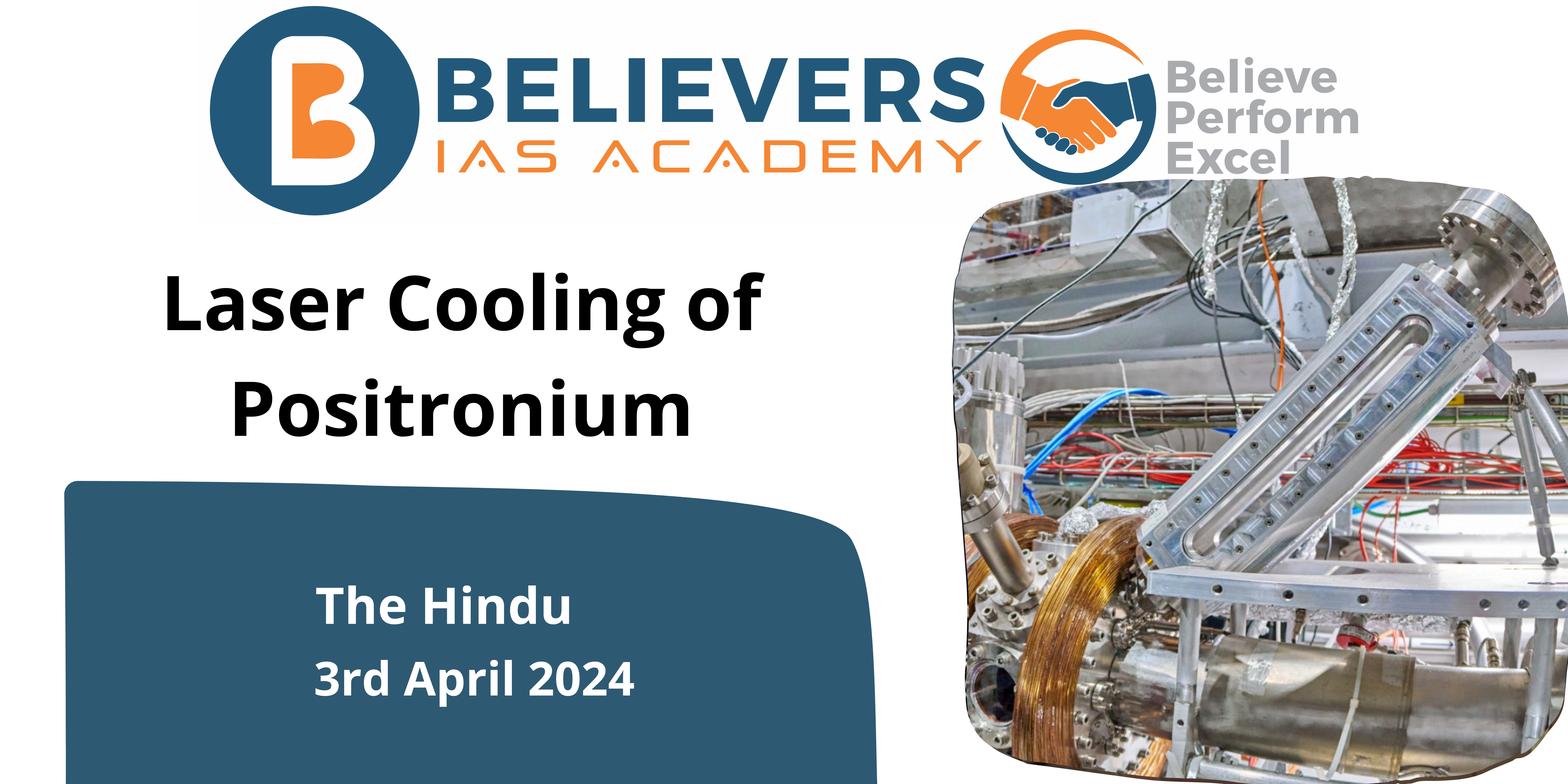Laser Cooling of Positronium
Context:
The AEgIS collaboration has achieved the laser cooling of Positronium, a short-lived atom that holds immense significance in quantum research.
Relevance:
GS-03 (Science and technology)
Facts for Prelims:
- Positronium:
- Positronium (Ps) is a system consisting of an electron and its anti-particle, a positron.
- Unlike hydrogen, the system has no protons.
- The system is unstable: the two particles annihilate each other to predominantly produce two or three gamma-rays, depending on the relative spin states.
- The energy levels of the two particles are similar to that of the hydrogen atom (which is a bound state of a proton and an electron).
- Since it is composed of an electron and a positron it lacks the usual nuclear matter which makes it purely leptonic atom. This is ideal for testing quantum electrodynamics. (Electrons and positrons are leptons).
- AEgIS (Anti-hydrogen Experiment):
- Gravity, Interferometry, Spectroscopy, is a collaboration among physicists from various European countries as well as India.
- In 2018, AEgIS achieved a groundbreaking milestone by becoming the first research initiative globally to demonstrate the pulsed generation of antihydrogen atoms.
Collaboration and Experimentation :
- The Antihydrogen Experiment: Gravity, Interferometry, Spectroscopy (AEgIS) collaboration, consisting of physicists from 19 European groups and one Indian group, conducted experiments at CERN to accomplish this feat.
- It was led by Professor Sadiq Rangwala from the Raman Research Institute.
- The Indian team contributed significantly to the experiment, particularly in designing laser beam alignment diagnostics.
- Despite decades of research since the late 1980s, advancements in technology, including cutting-edge lasers, were crucial for achieving laser cooling of Positronium.
Significance:
- Laser cooling of Positronium offers opportunities for comparing spectroscopic data crucial for Quantum Electrodynamics (QED) investigations.
- Precise measurements of antimatter properties and gravitational interaction could unveil novel physics insights and shed light on matter-antimatter imbalances.
- The concept of creating a Bose-Einstein condensate of antimatter, aimed at generating coherent gamma-ray light, shows potential for both fundamental and practical studies, including exploring the atomic nucleus.
- In such a condensate, matter or antimatter enters a coherent state akin to photons in a laser beam, leading individual atoms to lose their distinct identities and enabling efficient storage of many atoms in a confined space.




